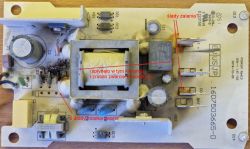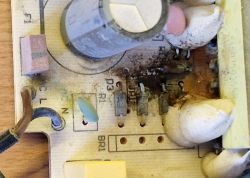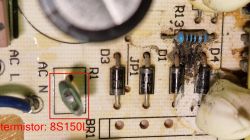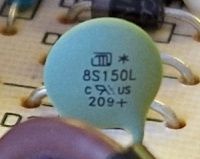Hello,
Let me join the topic (same charger: GAL 18V-40).
In my case, the charger probably experienced a little flooding which caused a short circuit (at least that's what I infer from the marks on the board).

.
Bridge area:
 .
.
.
After a light cleaning:
 .
.
Damage found:
- two of the four bridge diodes had a short circuit - replaced all. The resistor right next to them seems to have survived (brown, black, black, black, brown = 100om),
- the 8S150L thermistor is damaged (you can see the chipping in the last photo)
Other components appear to be ok.
No visual/mechanical/thermal damage on the soldered side of the board.
I have 3 questions for more experienced colleagues:
1. the capacitor (400v/100uF) I don't have much to measure (the meter measures up to 20uF). Hooking up an ohmmeter to it causes it to indicate some value at first, which gradually increases until it indicates no resistance (so probably no short circuit in it). Is there any way to check it better without a meter with a suitable range?
2) I cannot find the 8S150L thermistor in the shops. Is it possible to replace it with a substitute? (there is room in the housing, so cubically it could be something even noticeably larger).

.
3. can the fuse (looks like a capacitor next to the brown power cable) be replaced with a normal tube fuse? (2,5A)

2.

 .
.
 .
.
 .
.
 .
.
 2.
2.
